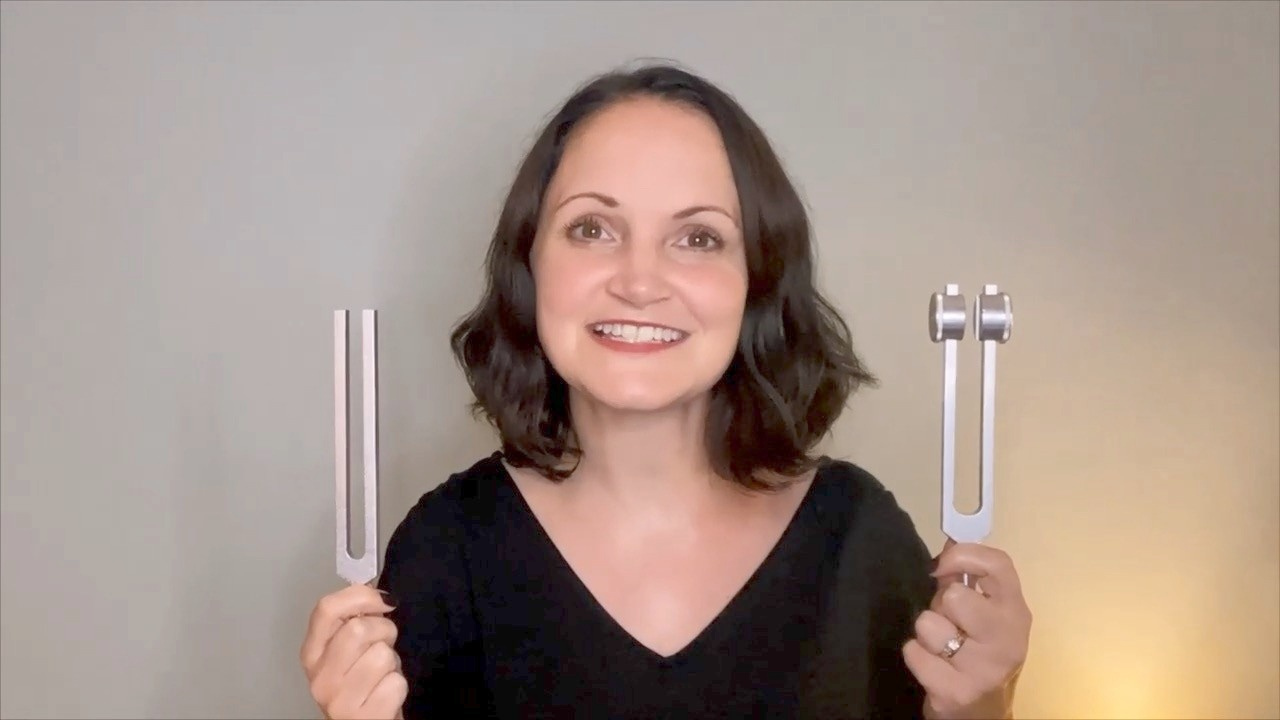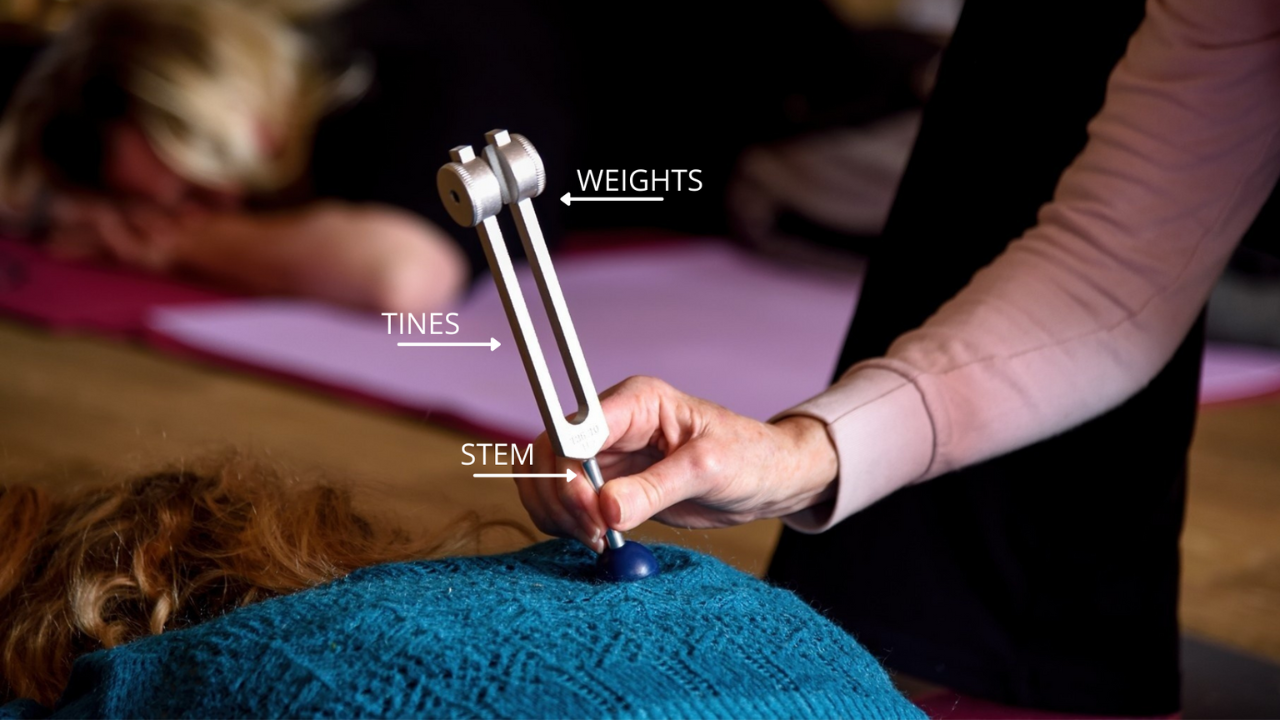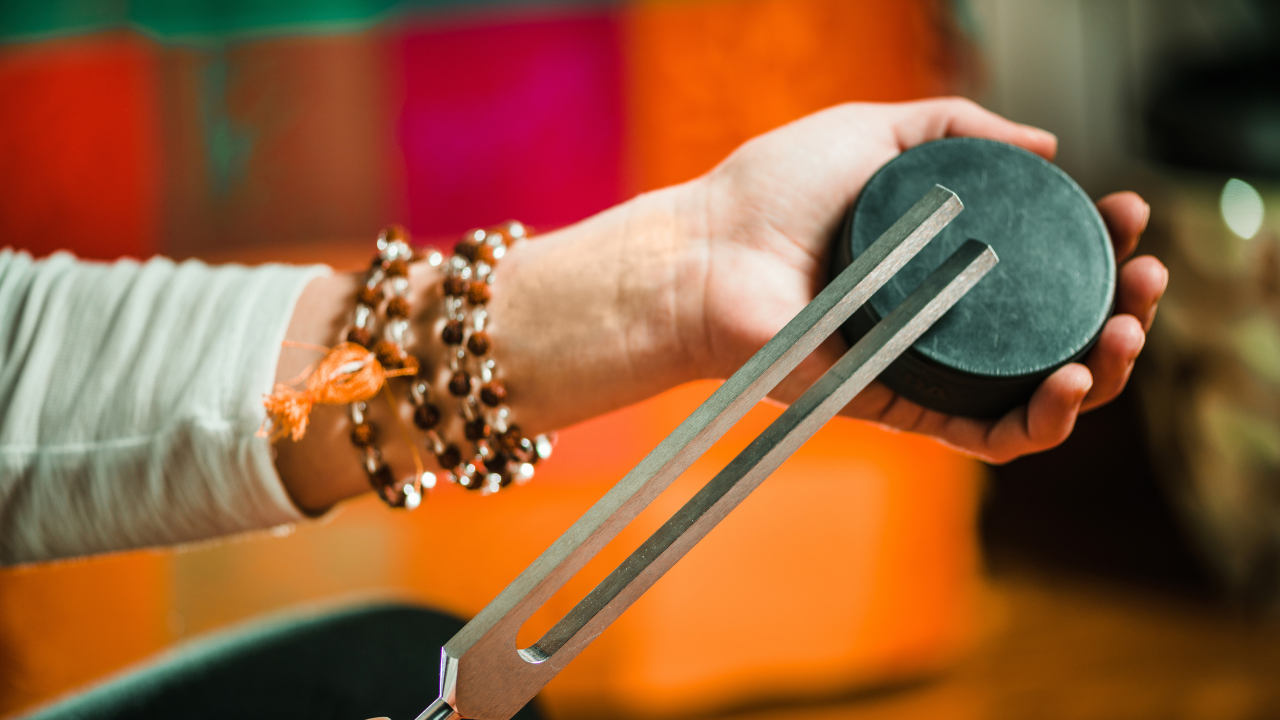Weighted Vs Unweighted Tuning Forks: What's The Difference
Aug 18, 2022
Tuning forks are beautiful, versatile instruments with pure frequencies that are very powerful when used in sound healing.
In this article, we will discuss the differences between weighted vs unweighted tuning forks, their characteristics, and how they are suitable for different applications.
Weighted Tuning Forks

Weighted tuning forks are used directly on the body, where the weights at the top of the fork amplify the vibration whilst pushing it down the tines and into the stem of the fork placed on the body.
As research has proven time and time again, weighted tuning forks have been successfully used to relieve joint pain, as well as reduce tension in muscles and nerve groups.
The most popular weighted tuning forks are the Otto tuning forks. These are tuned to the frequencies of 32hz, 64hz and 128hz and are the note of C in the diatonic scale.
“Otto” is short for Osteophonic; “osteo” meaning bones and “phonic” relating to sound. Therefore, weighted tuning forks or Otto tuners bring sound healing to the bones.
Another popular weighted tuning fork is the OM weighted tuning fork. This tuning fork vibrates at a frequency of 136.10 Hz. The mid-OM tone is said to stimulate the Anahata (heart chakra) and hence is widely believed to be good for meditation and healing.
The most important thing to remember about these types of forks is that they can be placed anywhere on the body, but each has a specific intention. The intention is everything!
How To Use Weighted Tuning Forks
The best part is that you can purchase tuning forks and use them on yourself, friends, and family.
However, there are some important tips for using a tuning fork that you should know:
- Always start by producing a sound in the weighted tuning fork. You can either use a rubber mallet to strike it or gently tap the tuning fork against your knee or the palm of your hand. If you hit it with a mallet, aim at the top of the weighted portion.
- Avoid striking the tuning fork on hard surfaces as they can break, despite being made of elastic steel.
- When holding the tuning fork by its stem, try to keep your wrists flexible and relax your fingers.
- Prevent tension in your arm by bending your elbow while holding the fork to remove discomfort during your healing session.
- Always ensure you hold the fork on its side so you can strike only one of its prongs (its U-shape enables both of its prongs to vibrate and create a smoother, purer sound).
- You can use it directly on the area of the body experiencing pain or discomfort, such as a muscle or joint, by gently touching the body with the fork to feel its powerful vibration.
Unweighted Tuning Forks

Unweighted tuning forks are used off the body, and they look similar to the weighted tuning forks but without the weights attached. These forks produce a clear and pure sound that is often compared to a laser's precision.
They are used on either side of the head, close to the ears, or off the body in the sound biofield or sound energy field. When used during meditation practices, they are very effective in quieting the mind and calming the nervous system, and when used off the body, they can ease physical pain whilst triggering great emotional shifts.
Besides meditation, integral sound healing practitioners like us love using unweighted tuning forks for relaxation, reducing stress, helping to recognise suppressed emotional trauma, and creating more openness to spiritual awareness.
How To Use Unweighted Tuning Forks
- Like the weighted tuning forks, always start by producing an introductory sound using a rubber mallet to strike it or gently tap the tuning fork against a tuning fork activator. If you hit it with a mallet, aim towards the top of one of the tines.
- Keep your wrists, palms, and fingers relaxed at all times.
- Use the fork(s) around the area of the body experiencing pain or discomfort, or hold it at a reasonable distance from the ears to feel its powerful vibration and healing properties.
If you are interested in purchasing tuning forks, don’t forget to check our Sound Therapy Shop, which has sound healing instruments and plenty of tuning fork accessories to explore and try. Even more, if you want to find out more about how to use tuning forks for healing, we have a great YouTube video that summarises these two versatile forks and shows why they’re such a great addition to any sound healer’s toolkit, whether it be for personal or client use!
Final Thoughts On Weighted Vs Unweighted Tuning Forks
Tuning forks are one of the many sound healing instruments used for sound therapy to greatly benefit our mind, body, and soul. One thing is for sure - they’re growing in popularity, as now they’re being used in skincare and pain-relief treatments too.
At The Sound Healing Academy, we have many courses available for beginners through to advanced practitioners, either Online or In-person Training Courses, where you can learn how to work with the resonant vibrations of healing sounds. So join us and start learning how to work with healing sounds to help yourself, your friends, and your family improve health and wellness, and to become a certified sound healing practitioner!
Would you like to find out more?
Join one of our Online Tuning Forks Courses!
Are you looking to purchase high-quality tuning forks?
Check out our Sound Therapy Shop for our Tuning Forks Collection.
Join Our Sound Healing Newsletter
Be the first to hear about upcoming events, workshops, and exclusive offers on instruments and training.
Unlock a world of free resources, inspiring sound healing courses, and more!
SPAM is a NO-NO! We will never sell your information, for any reason.







